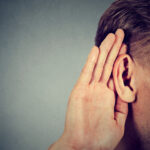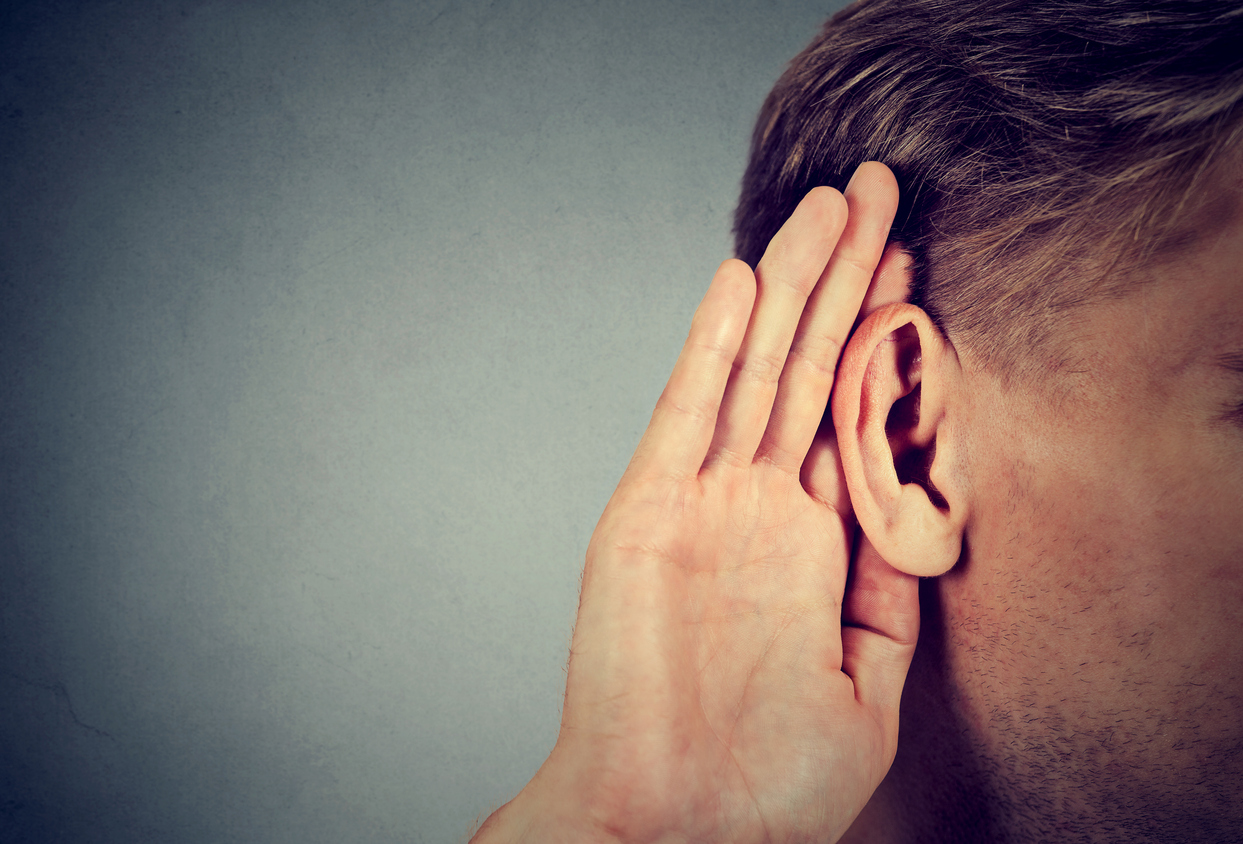Hearing is one of the five primary senses and plays an essential role in how we interact with the world around us. Through hearing, we perceive sounds—whether they be speech, music, environmental noises, or the more subtle sounds of nature—and interpret them to navigate our daily lives. The auditory system, which includes the ears, auditory nerves, and parts of the brain, works together to detect and process these sounds. In this article, we will explore the importance of hearing, how it functions, the factors that can affect it, and steps we can take to protect and maintain it.
The Anatomy of Hearing
The process of hearing begins with sound waves, which are vibrations that travel through the air. These sound waves enter the outer ear, which consists of the pinna (the visible part of the ear) and the ear canal. The pinna acts as a funnel, directing sound into the ear canal toward the eardrum. When sound waves reach the eardrum, they cause it to vibrate.
These vibrations are then transmitted to three tiny bones in the middle ear: the ossicles. These bones, known as the malleus (hammer), incus (anvil), and stapes (stirrup), amplify the sound vibrations and transmit them to the cochlea in the inner ear. The cochlea is a spiral-shaped structure filled with fluid and lined with hair cells. As the vibrations travel through the fluid, they cause the hair cells to move. The movement of these hair cells is transformed into electrical signals that are sent to the auditory nerve, which then carries them to the brain for processing.
The brain interprets these electrical signals, allowing us to perceive sounds. This complex process allows us not only to hear speech and music but also to perceive different attributes of sound such as pitch, volume, and direction. This is crucial for communication, safety, and overall interaction with our environment.
The Role of Hearing in Communication
Hearing is a cornerstone of human communication. Verbal language, one of the most effective forms of communication, relies heavily on the ability to hear and process speech. Without hearing, understanding spoken language becomes incredibly challenging. Hearing allows us to comprehend conversations, participate in social interactions, follow instructions, and engage in the shared exchange of information.
In addition to spoken language, hearing enables us to interpret non-verbal sounds such as tone, inflection, and rhythm, which often carry emotional significance. For instance, hearing the tone of a person’s voice helps us determine whether they are happy, sad, angry, or excited. This ability enhances our emotional connection with others and supports social bonding.
Moreover, hearing plays a key role in understanding environmental sounds, such as the sound of a car approaching, a child crying, or a fire alarm ringing. These sounds act as important cues that help us assess our surroundings and respond to potential dangers, contributing to safety and survival.
Common Hearing Problems
Unfortunately, hearing loss is a common issue that affects millions of people worldwide. Hearing loss can occur at any age and can be caused by a variety of factors. The most common types of hearing loss include:
- Conductive Hearing Loss: This occurs when sound waves are not effectively transmitted through the outer or middle ear. Causes may include ear infections, fluid buildup, earwax blockages, or damage to the eardrum. Conductive hearing loss is often treatable through medical interventions or surgery.
- Sensorineural Hearing Loss: This type of hearing loss involves damage to the hair cells in the cochlea or the auditory nerve itself. It is often caused by aging (presbycusis), exposure to loud noise, certain medications, or genetic factors. Sensorineural hearing loss is typically permanent and cannot be reversed, though hearing aids or cochlear implants can help individuals manage the condition.
- Mixed Hearing Loss: This is a combination of both conductive and sensorineural hearing loss, meaning there is both a problem with the outer or middle ear and damage to the inner ear or auditory nerve.
- Tinnitus: Tinnitus is a condition where a person hears ringing, buzzing, or other phantom sounds in the ears, often in the absence of any external sound. It is typically linked to hearing damage, but it can also result from stress, ear infections, or other factors. While there is no cure for tinnitus, treatments can help manage the symptoms.
Risk Factors for Hearing Loss
Several factors can increase the likelihood of developing hearing loss over time. Some of the most common risk factors include:
- Age: As people age, the sensory cells in the inner ear can deteriorate, leading to presbycusis, or age-related hearing loss. This condition generally develops gradually, making it difficult for individuals to notice at first.
- Noise Exposure: Prolonged exposure to loud sounds, such as concerts, machinery, or even personal music players at high volumes, can damage the delicate hair cells in the cochlea. The damage is often permanent, which is why it is crucial to protect your ears from excessive noise.
- Genetics: Some people may inherit a genetic predisposition to hearing loss, which can manifest either at birth or later in life.
- Infections and Illnesses: Certain infections, such as ear infections, meningitis, or mumps, can lead to temporary or permanent hearing loss. Illnesses like high blood pressure or diabetes can also have an impact on hearing health.
- Medications: Some medications, particularly ototoxic drugs, can damage the hearing system. These include certain antibiotics, chemotherapy drugs, and non-steroidal anti-inflammatory drugs (NSAIDs).
Protecting and Maintaining Hearing Health
Given the critical importance of hearing in daily life, it is essential to take steps to protect and preserve it. Here are several strategies to help safeguard your hearing:
- Limit Noise Exposure: Avoid prolonged exposure to loud noises. If you must be in a noisy environment, wear ear protection such as earplugs or earmuffs. Reducing the volume on personal audio devices and taking breaks in quiet environments can also help reduce the risk of hearing damage.
- Get Regular Hearing Checkups: Routine hearing tests can help detect early signs of hearing loss. Early detection allows for timely interventions, such as the use of hearing aids or other assistive devices.
- Maintain Ear Hygiene: Regularly cleaning your ears helps prevent earwax buildup, which can cause temporary hearing loss. However, avoid inserting objects like cotton swabs into the ear canal, as this can push wax deeper and cause injury.
- Take Care of Your Overall Health: Managing conditions like diabetes, hypertension, and high cholesterol can reduce the risk of hearing loss. A healthy lifestyle, including a balanced diet and regular exercise, promotes good circulation and the overall health of the auditory system.
- Protect Your Ears from Loud Noises: Whether at a concert, using power tools, or working in a noisy environment, it is important to wear ear protection. If you work in an environment with high noise levels, employers are often required to provide hearing protection, but it’s up to the individual to use it consistently.
The Future of Hearing Health
Advancements in medical technology continue to improve the ways we can diagnose and treat hearing loss. For example, cochlear implants have enabled individuals with severe sensorineural hearing loss to regain the ability to hear, while new hearing aids offer more discreet and effective amplification of sound. Additionally, ongoing research into gene therapies and stem cell treatments may one day provide a cure for some types of hearing loss.
As we continue to learn more about the auditory system and the effects of noise and aging on hearing, it is crucial that we prioritize hearing health just as we do other aspects of physical well-being.
Conclusion
Hearing is an invaluable sense that allows us to engage with the world around us, communicate effectively, and remain safe. Understanding the anatomy of hearing, recognizing the risks of hearing loss, and taking proactive steps to protect our hearing are vital for maintaining this sense throughout our lives. With ongoing advancements in hearing technology and treatments, the future holds promise for individuals experiencing hearing loss. However, prevention remains key, and by adopting healthy habits and protecting our ears from excessive noise, we can ensure that hearing continues to enhance our lives for years to come.











